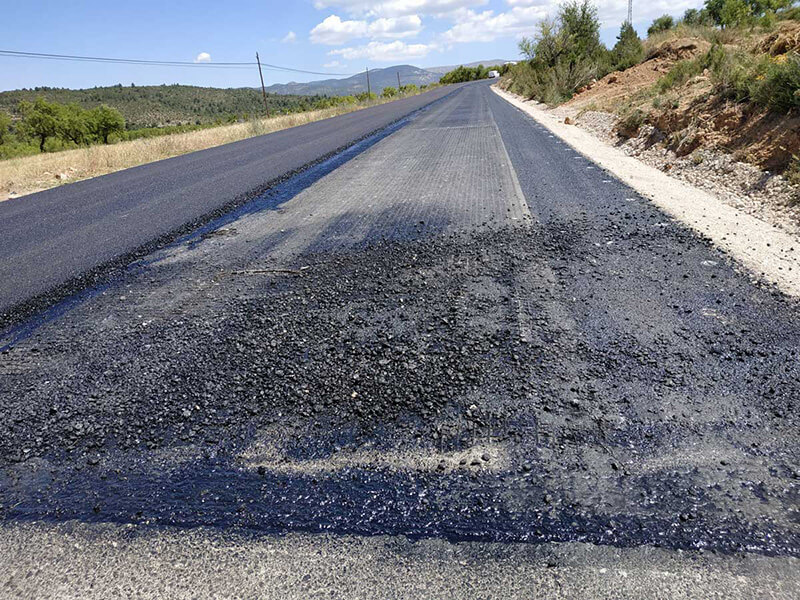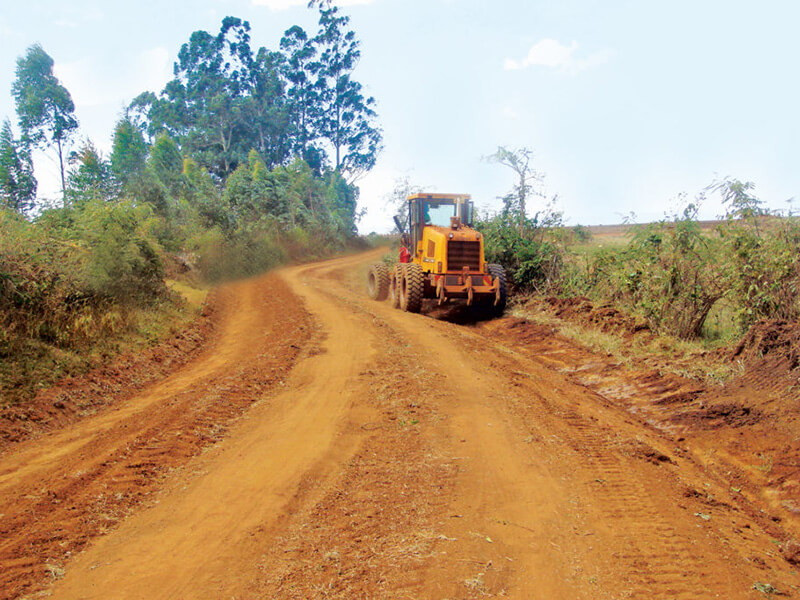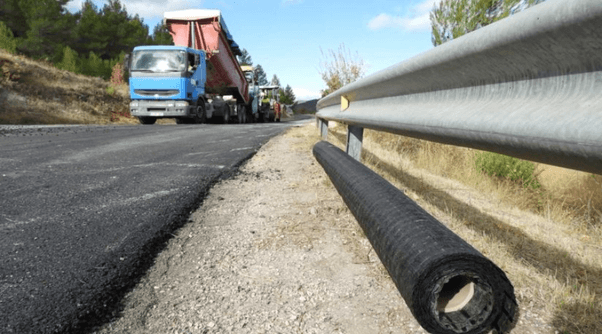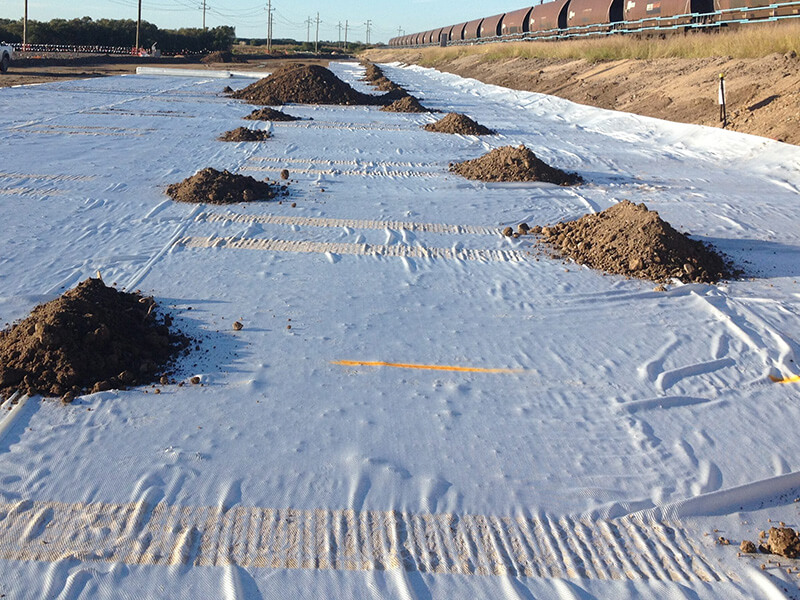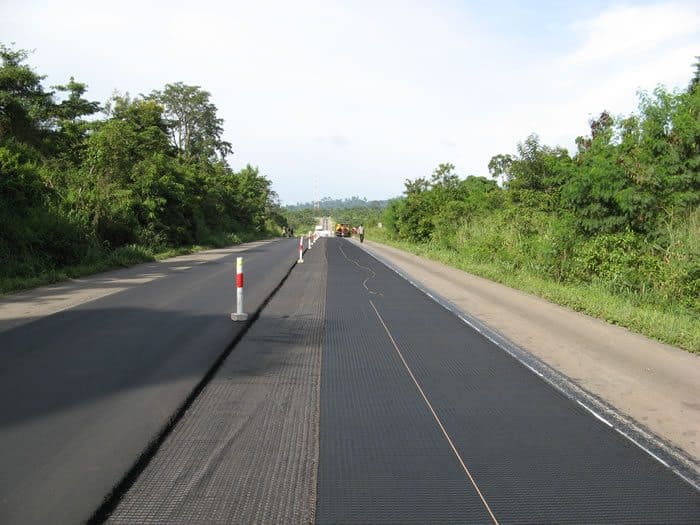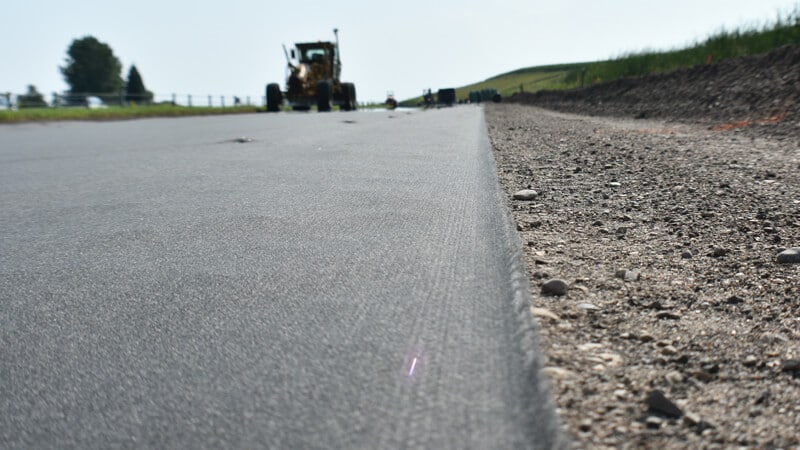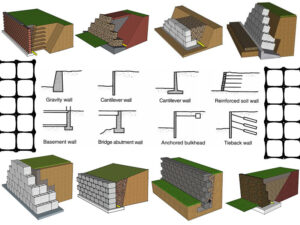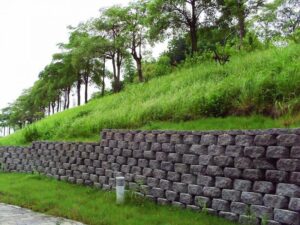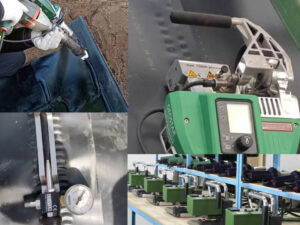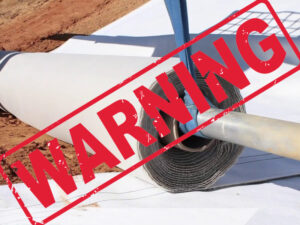Laying geotextile separation layers during the construction of rural roads can effectively enhance the lifespan and safety of the road, while also providing multifaceted protection to the road structure and the environment.
In this project, the length of the road section with geotextile separation layers is 4670 m. The width of the installation is 9.88 m, and the area covered by the woven geotextile is 46140 ㎡.
Construction Plan
1. Storage, Transportation, and Handling of Geotextile:
- Before installation, geotextile rolls should be stored in a flat area without water accumulation, and the stacking height should not exceed four rolls.
- Geotextile rolls must be covered with opaque material to prevent UV aging.
- During transportation, including from the material storage area to the work site, geotextile rolls must be protected from damage.
- Geotextile rolls that have suffered physical damage must be repaired. Geotextile with severe wear should not be used.
- Geotextile that has come into contact with leaked chemical agents is not allowed for use in this project.
2. Geotextile Installation Method:
2.1 Roll out the geotextile manually, ensuring a smooth surface and leaving adequate deformation allowance.
2.2 During construction, install the geotextile using the natural lap joint method, with a lap width generally not less than 30 cm.
3. Basic Requirements for Geotextile Installation:
3.1 During the installation process, fix one end of the geotextile to ensure it remains taut.
3.2 All geotextiles must be weighted down with sandbags, which will be used during installation and retained until the placement of the overlying material.
4. Geotextile Installation Process:
- Conduct subgrade inspection.
- Perform on-site measurements.
- Cut the geotextile to fit.
- Lay the geotextile.
- Seam or thermally bond the geotextile.
- Inspect the geotextile connections for compliance.
- Complete the construction.
5. Geotextile Installation Process Requirements:
5.1 Subgrade Inspection:
Check the subgrade for smoothness and solidity. Remove any foreign objects beforehand.
5.2 Trial Installation:
Based on site conditions, determine geotextile dimensions and conduct a trial installation. Ensure accurate cutting dimensions.
5.3 Check Spreading Width:
Verify if the spreading width is appropriate. Ensure smoothness and appropriate tension at lap joints.
5.4 Positioning:
Compact the lap joints of two geotextile pieces using sandbags.
5.5 Post-Installation Inspection:
After installation, check if the geotextile is laid flat and free from defects.
5.6 Repairing Defects:
Promptly repair any deviations from requirements identified during the inspection.
6. Self-Inspection and Repairs:
6.1 All geotextile pieces must undergo a thorough inspection. Defective pieces should be clearly marked on the geotextile and promptly repaired.
6.2 At the end of each day’s installation, visually inspect the entire surface of the geotextile laid that day. Ensure all damaged areas are marked and immediately repaired. Confirm that there are no foreign objects, such as fine needles or small nails, that could cause damage.
6.3 Technical requirements for geotextile repairs:
6.3.1 Patch material used for holes or cracks should match the geotextile.
6.3.2 Patches should extend at least 30 centimeters beyond the damaged area of the geotextile.
6.4 Construction personnel, including their work shoes and tools, should not cause damage to the geotextile. Personnel must refrain from actions that could harm the geotextile, such as smoking or poking it with sharp tools, on the laid geotextile.
6.5 To ensure the integrity of the geotextile material, the packaging film should be opened before laying the geotextile. Unroll one roll at a time and inspect the appearance and quality.
Summary:
Geotextile, as a novel construction material, has found extensive application in highway engineering. Its use has enhanced construction efficiency and project quality by effectively preventing water ingress, leakage, and distributing pressure. Geotextile contributes to the improvement of foundation stability and the durability of road surfaces. Additionally, it offers advantages such as cost-effectiveness and ease of installation, making it one of the most commonly used construction materials in highway engineering.

